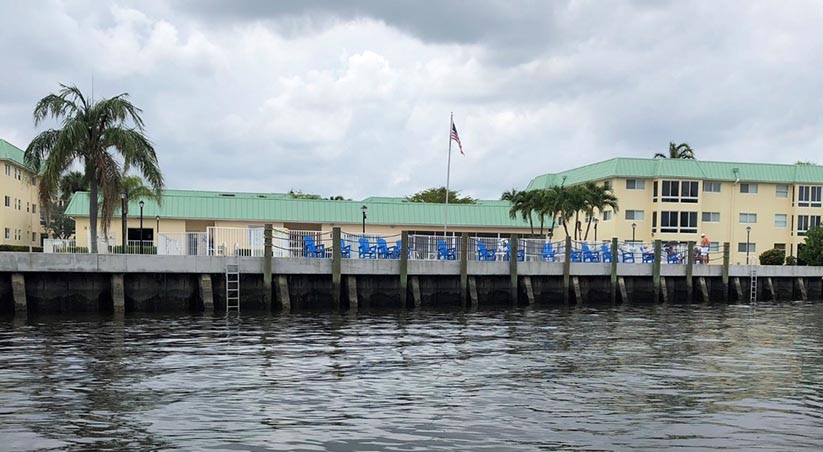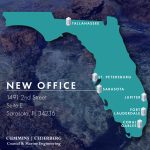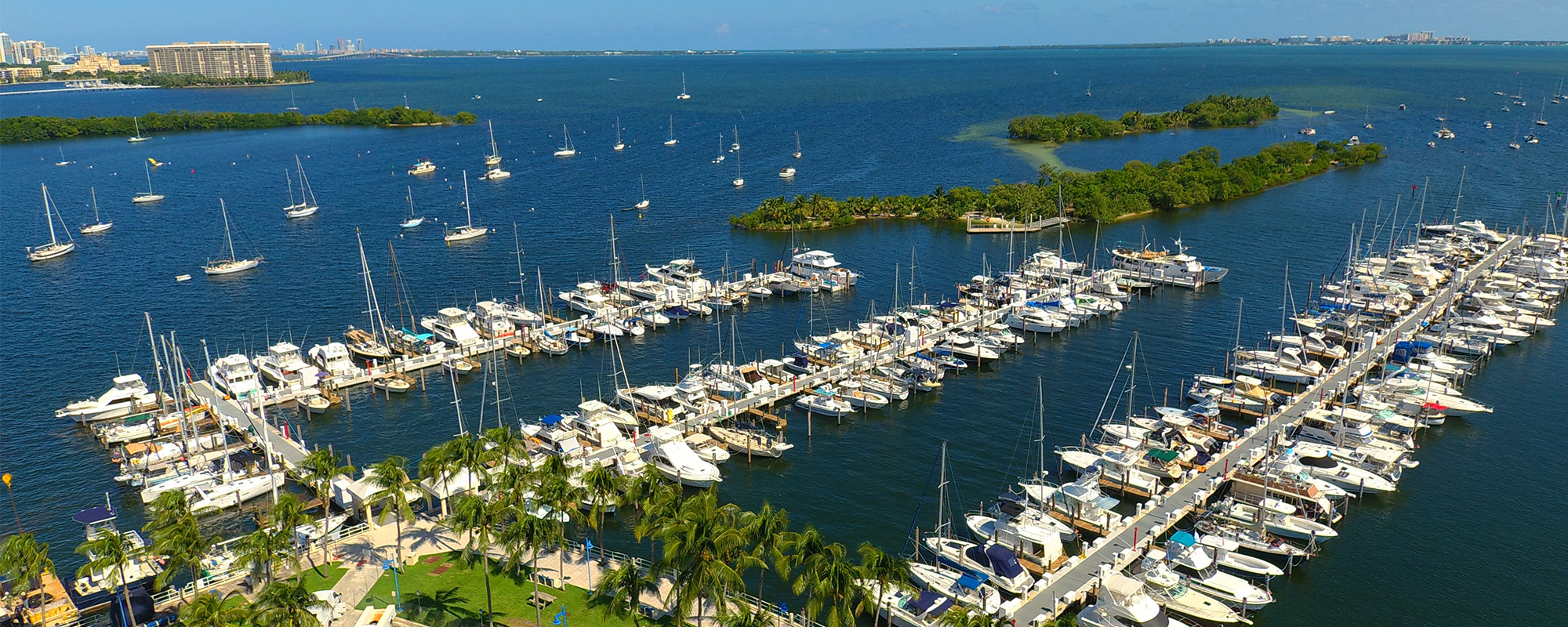Coastal structures provide shoreline stabilization and protection for properties along the waterfront. Seawalls are a common type of coastal structure and are typically designed to reduce upland erosion and excessive flooding from high tides. These structures can also be designed to provide protection from extreme storm events like hurricanes. In addition to extreme events, the effects of sea level rise should be considered in the seawall design to maintain a minimum level of service into the future, especially along the low-lying coastal areas of Florida.
An increasing number of municipalities are incorporating minimum seawall elevations into their ordinances and building codes to account for sea level rise. These relatively new requirements may impact your seawall project, depending on the amount and extent of work proposed. Be sure to ask your licensed engineer or contractor to incorporate any new seawall design requirements into your project. For example, Broward County adopted a new seawall ordinance on April 1, 2020 requiring all new or substantially rehabilitated seawalls to have a minimum elevation of +5.0 feet (NAVD). However, applications for new or substantially repaired seawalls submitted prior to January 1, 2035, may be permitted with a minimum elevation of +4.0 feet (NAVD), if designed and constructed to accommodate raising the elevation to 5.0 feet (NAVD) by January 1, 2050.
Here is what you will need to know about proper seawall maintenance:
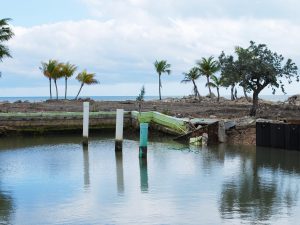 Service Life
Service Life
Seawalls are exposed to many environmental forces throughout their service life which can cause deterioration. Many seawalls along residential and commercial properties in Southeast Florida were built during the development boom of the 1950s and 1960s. As a result, many waterfront structures, including seawalls, are over 60 years old and have likely exceeded their useful service life due to deterioration from long-term exposure to salt water, tides, vessel impacts, storms, and overloading.
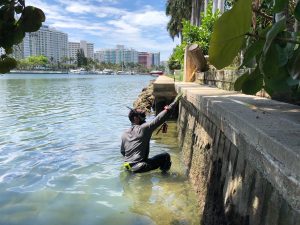
Inspection
A periodic inspection is a valuable tool an owner can implement to document deterioration and pre-emptively perform repairs before a seawall requires replacement. Repairs can extend the useful service life of a seawall and are typically less expensive than replacement. The American Society of Civil Engineers recommends coastal structures be inspected a minimum of once every 5 years. There are also signs of deterioration an owner can look for that should prompt an inspection including cracking, corrosion, rotation, and upland settlement or soil loss. These types of deterioration may indicate a reduction in the structural integrity, safety, and shoreline protection properties of the seawall, and should be addressed by a professional before failure.
“Similar to your car, seawalls and docks require periodic inspection and maintenance to keep them safe and functional. Deterioration to these structures can extend underwater and may not be apparent during normal use. An inspection by a professional engineer with waterfront structural design experience can help to reduce repair and replacement costs by proactively addressing any issues.,” said Jordon Cheifet, PE, CFM, senior engineer with Cummins Cederberg. Keeping up to date with seawall maintenance and repair can extend its service life and keep it functional for years to come. Seawall deterioration, if left unaddressed, will accelerate rapidly due to increased access and further infiltration of the harsh marine environment.
A proper seawall inspection should include observations both above and below water to document deterioration, which can occur all the way down to the seabed. For example, removal of marine growth in the tidal zone may uncover cracking and probing along the seabed can confirm upland sinkholes caused by washout of soil through the seawall. The inspection should be performed by a licensed Professional Engineer with seawall inspection experience, familiar with the types of deterioration commonly encountered, where to look for them, and how to design a repair or replacement to resolve them.
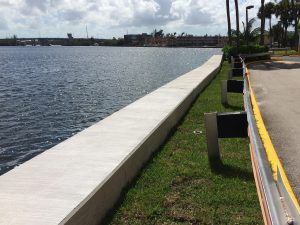 Design
Design
The information obtained during the seawall inspection is used to design the repair or replacement. The design and construction of a seawall should include careful consideration of the location of the seawall and the forces it may encounter during its service life. Seawalls come in many different configurations and can be built from many materials including steel, concrete, timber, aluminum, vinyl, and composites – each with their own advantages. An owner and engineer must consider the cost, service life, constructability and durability when selecting a design for a specific site. For example, seawalls along the Atlantic Ocean are typically more expensive and constructed of steel or concrete, as the forces during a storm may be too great for other materials.
With proper planning, routine inspections, proactive maintenance, and thoughtful design, a seawall owner can maintain shoreline stabilization and protection for their property now and into the future.
